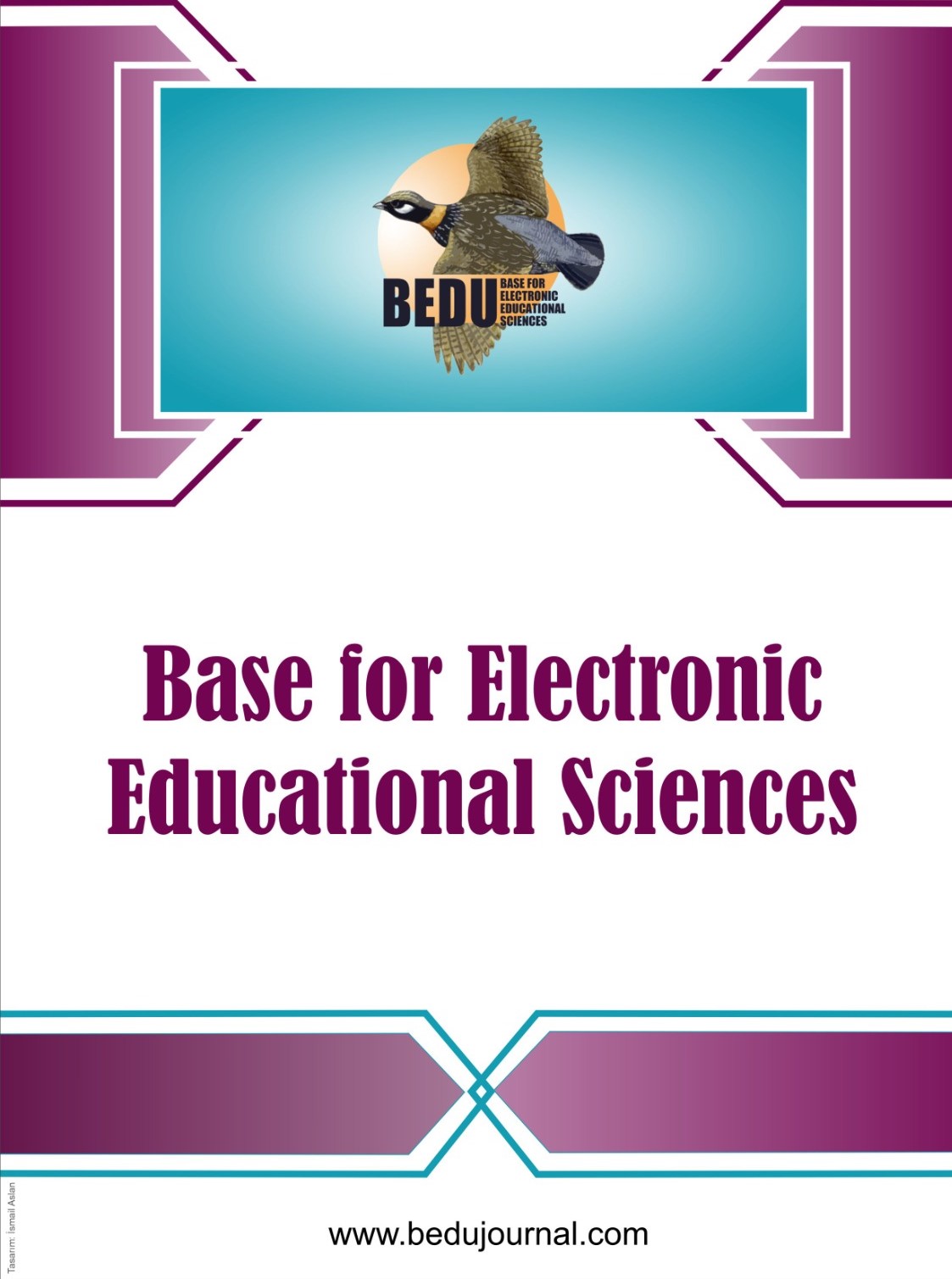Research article | Open Access
Base for Electronic Educational Sciences 2023, Vol. 4(2) 16-29
Teachers' Attitudes Towards Code-Switching in Teaching English Grammar at Public Secondary Schools in Jerusalem District
pp. 16 - 29 | DOI: https://doi.org/10.29329/bedu.2023.597.2
Publish Date: September 15, 2023 | Single/Total View: 77/450 | Single/Total Download: 96/861
Abstract
The role of L1 in teaching has been always a controversial issue for the researchers. The main purpose for the research was to investigate teachers' attitudes towards using code-switching in teaching English grammar in public secondary schools in Jerusalem district. The researcher used Macaro's (1997) way of classifying the positions for or against the use of the L1 in the L2 classroom as theoretical framework. The results of the study which were collected through distribution a questionnaire to EFL teachers who teach English as a second language. The results of this study indicated that code-switching was sometimes used in the primary English classrooms by both teachers and students. Moreover, the findings indicated that the use of code-switching was commonly used in the EFL classroom, for a range of purposes and with varying degrees of frequency. In other words, teachers use the mother tongue in teaching English grammar for explaining difficult idea or concept. On the other hand, the study revealed that relying heavily on the mother tongue in the EFL classroom will deprive the students of being exposed to English.
Keywords: code-switching, English as a foreign language (EFL), teaching grammar
APA 7th edition
Alessa, I.A. (2023). Teachers’ Attitudes Towards Code-Switching in Teaching English Grammar at Public Secondary Schools in Jerusalem District. Base for Electronic Educational Sciences, 4(2), 16-29. https://doi.org/10.29329/bedu.2023.597.2
Harvard
Alessa, I. (2023). Teachers’ Attitudes Towards Code-Switching in Teaching English Grammar at Public Secondary Schools in Jerusalem District. Base for Electronic Educational Sciences, 4(2), pp. 16-29.
Chicago 16th edition
Alessa, Inas Abbad (2023). "Teachers’ Attitudes Towards Code-Switching in Teaching English Grammar at Public Secondary Schools in Jerusalem District". Base for Electronic Educational Sciences 4 (2):16-29. https://doi.org/10.29329/bedu.2023.597.2
Adnan, M. A. M., Mohamad, S., Yusoff, M. A., & Ghazali, Z. (2014). Teachers’ attitudes towards the use of first language in Arabic classroom. International Refereed Research Journal, 5(2), 20-28.
Al-Balawi, F. S. (2016). The attitudes of Saudi EFL teachers about using their mother tongue in EFL classrooms. International Journal of Education and Social Science, 3(7), 51-61.
Almohaimeed, M. S., & Almurshed, H. M. (2018). Foreign language learners' attitudes and perceptions of L1 use in L2 classroom. Arab World English Journal, 9(4), 433-446.
Alshehri, E. (2017). Using learners’ first language in EFL classrooms. IAFOR Journal of Language Learning, 3(1), 20-33.
Auerbach, E. (1993). Reexamining English only in the ESL classroom. TESOL Quarterly, 27(1), 9-32.
Çelik, Ş. S., & Aydın, S. (2018). A review of research on the use of native language in EFL classes. The Literacy Trek, 4(2), 1-14.
Chang, S. (2011). A contrastive study of code-switching in teaching English. English Language Teaching, 4(2), 13-24.
Cole, S. (1998). The use of L1 in communicative English classrooms. The Language Teacher, 22(11), 11-14.
Cook, V. (2001). Using the first language in the classroom. Canadian Modern Language Review, 57(3), 402-423.
Cook, Vivian. 2008. Second language learning and language teaching. 4th edn. London: Arnold.
Damra, H. M., & Al Qudah, M. (2012). The effect of using native language on grammar achievement and attitudes toward learning of basic stages EFL students in Jordan. International Journal of Business and Social Science, 3(1), 300-306.
Ellis, R. (1984). Classroom second language development. Oxford: Pergamon.
Ghaiyoomian, H., & Zarei, G. R. (2015). The effect of using code-switching on learning grammatical structures: A case study of Iranian junior high school students. Research in English Language Pedagogy, 3(1), 32-39.
Hall, G., & Cook, G. (2014). Own language use in ELT: exploring global practices and attitudes. Language Issues: The ESOL Journal, 25, (1), 35-43.
Halmari, Helena. 2004. Code switching patterns and developing discourse competence in L2 In Boxer, Diana & Cohen, Andrew D. Studying speaking to inform second language learning. Cleverdon: Multilingual Matters
Hamers, J. F., & Blanc, M. (2000). Bilinguality and bilingualism. Cambridge University Press. Johnstone, A. H., & Selepeng, D. (2001). A language problem revisited. Chemistry Education Research and Practice, 2(1), 19-29.
Krashen, S. D. (1983). Principles and practice in second language acquisition. New York: Pergamon Institute of English.
Larsen-Freeman, D. (1986). Techniques and principles in language teaching. Journal of English Studies, 33(3), 277-281.
Mattioli, G. (2004). On native language intrusions and making do with words: Linguistically homogeneous classrooms and native language use. English Teaching Forum, 42(4), 20-25.
Nation, I. S. P. (2001). Learning vocabulary in another language. Cambridge: Cambridge University Press. Oxford University Press.
Nation, P. (2003). The Role of code-switching in foreign language learning. The Asian EFL Journal, 5(2), 1-8.
Penny, R. (2000). Variation and change in Spanish. Cambridge: Cambridge University Press. Oxford University Press.
Rababah, G. (2003). Communication and linguistic problems facing Arab learners of English. Indian journal of applied linguistics, 29(1), 127-142.
Ramachandran, S. D., & Rahim, H. A. (2004). Meaning recall and retention: The impact of the translation method on elementary level learners’ vocabulary learning. RELC Journal, 35(2), 161-178.
Sadighi, F., Rahimpour, S., & Rezaei, M. (2018). Iranian EFL learners’ and teachers’ attitudes towards the contribution of L1 in learning English vocabulary. International Journal of English and Education, 7, (4), 140-158.
Swain, M., & Lapkin, S. (2000). Task-based second language learning: The uses of the first language. Language Teaching Research, 4(3), 251-270.
Swain, M., & Lapkin, S. (2000). Task-based second language learning: The uses of the first language. Language Teaching Research, 4(3), 251-274.
Tang, J. (2002, January). Using L1 in the English classroom. English Teaching Forum, 40(1), 36-43.
Valdés-Fallis, Guadalupe. 1978. Code-switching and the classroom teacher. Arlington, Virginia: Center for applied linguistics.
Weinberg, J. (1990, June). TESOL Newsletter, 24(3).
